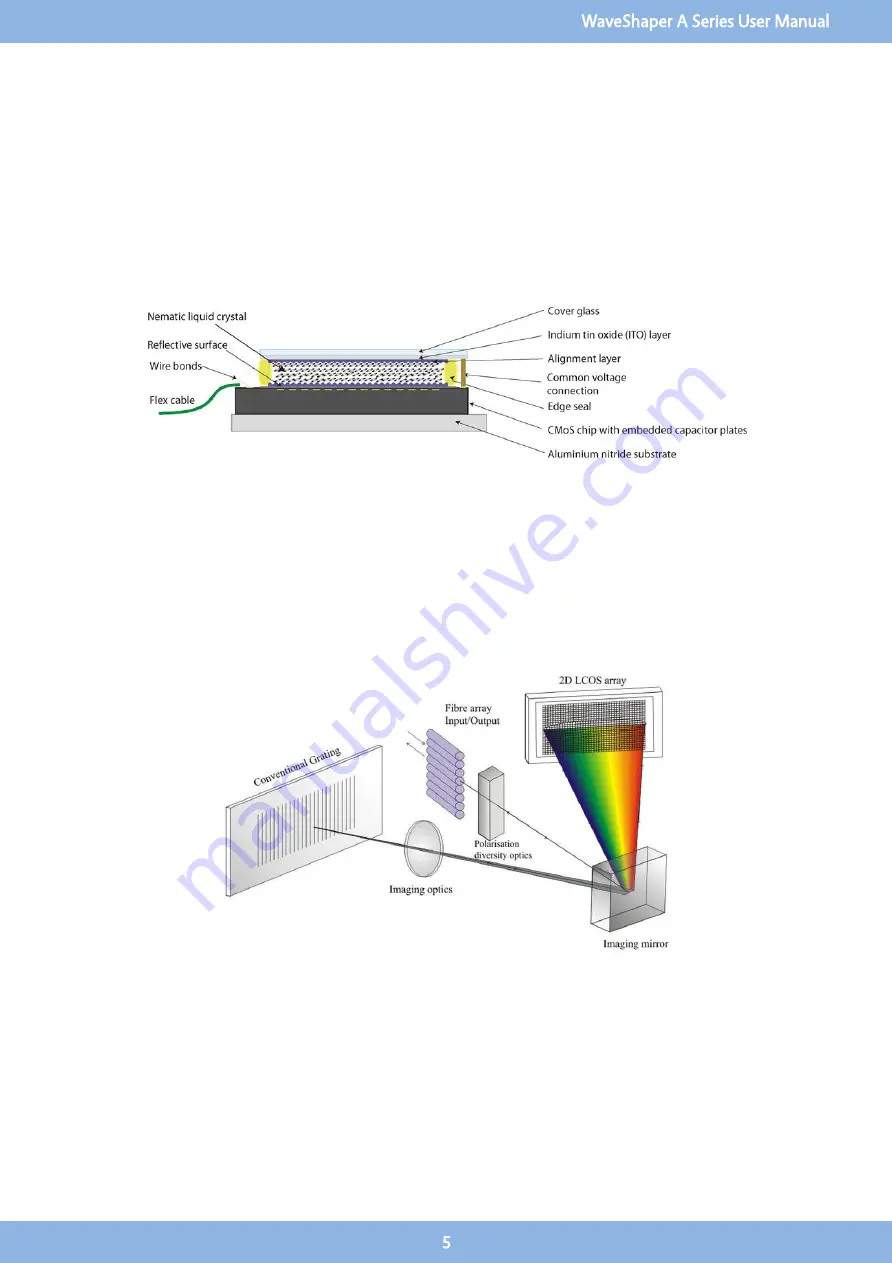
The module is supplied with a mating Phoenix power plug which needs to be wired to a power supply capable of pro5V to
+5.6V at a current of at least 8A. The wire used should be red for +5V and black for 0V 22AWG (0.5mm,16/0.2,Tri-rated PVC
insulated UL1015).
1.2
LCoS Introduction
Conventional liquid crystal components used in telecom applications employ control of polarisation state to pass or transmit light
to create for example wavelength blockers or attenuators. Switching applications can be achieved through polarisation dependent
deflection or displacement. These designs are limited by having inflexible configurations – typically with one pixel per channel -
and the requirement to preconfigure the channel plan in advance.
Liquid Crystal on Silicon (LCoS) is a display technology which combines Liquid Crystal and semiconductor technologies, to create
a high resolution, solid-state display engine. The diagram shows the structure of an LCoS display with the Liquid Crystal (LC) layer
sandwiched between the Active Matrix silicon backplane and the ITO-coated (Indium Titanium Oxide) top glass.
1.3
Optical Design
LCoS can be employed to control the phase of light at each pixel to produce beam steering. In the WaveShaper, a large number of
phase steps are used to create a highly efficient, low-insertion loss switch shown schematically in this diagram. This simple optical
design incorporates polarisation diversity, control of mode size and a 4-f wavelength optical imaging in the dispersive axis of the
LCoS providing integrated switching and optical power control.
Light enters the device from a fibre array, and is then processed by polarisation diversity optics to align orthogonal polarisation
states to maximize efficiency at the diffraction grating. The grating is designed to be at Littrow incidence, and angularly disperses
the light to the LCoS array, where the reflected light is traced back through the system to the chosen output fibre, based on the
beam-steering image programmed on the LCoS array.
As the wavelengths are separated on the LCoS the control of each wavelength is independent of all others and can be switched or
filtered without interfering with other wavelengths.
WaveShaper A Series User Manual
5




















